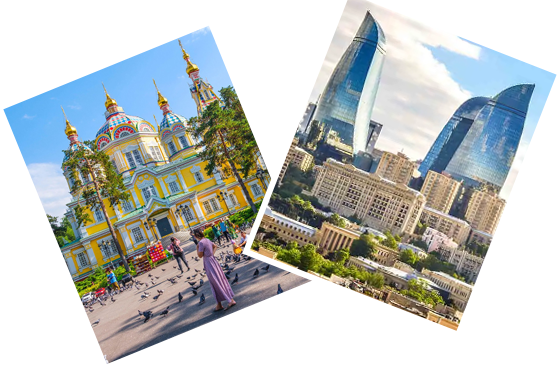MADRID - GRAN VIA
The Gran Va street is an urban esplanade in central Madrid Spain. It leads from Calle de Alcal close to Plaza de Cibeles to Plaza de Espaa
Get swept away with these best places to visit in Spain
Whether it’s for the splendid sunshine and beaches, the cultural diversity, its famous lazy-day siestas, flamencos and festivals, delicious Spanish tapas or soaking up the beautiful city sights, the entire country of Spain is an open book of amazing experiences that you just can’t miss. A colourful, passionate country in Southern Europe, Spain is one of the most visited destinations and it is quite easy to believe why. Here, it’s hard not to fall in love with the bohemian and foodie vibes of Barcelona, the art-inspiring neighbourhood of Gracia and its food, the beachy feel in Costa Brava and the Canary Islands, the magnificent places to visit in Madrid, the culture-rich medieval town of Girona and Valencia and so much more that make Spain the top favourite among the bucket list destinations. If you’re willing to get off-the-beaten-path and make your way a bit further to the lesser-experienced Spain Attractions, visit the natural park of Cap de Creus that rewards you with spectacular nature sightings, the vineyards of Rioja, the Basque region which feels like being in an entirely different country, the great cities of Malaga, Cadiz, Seville and particularly Catalonia, that unbelievably has a language and culture of its own. What’s more is that you can indulge in so many history-rich Spain Tourist Attractions, ranging from the desolate Roman ruins, cathedrals of rare power and unparalleled charms of Islamic architecture and there’s always room for more. Do keep a keen eye on when the country relishes it's ‘fiesta time’ in the globally famous La Tomatina, the Three Kings and holey week and you won’t regret it.
This goes without a doubt that Barcelona ticks off almost all the experiences in Spain's tourist bucket list; however, the real crowning jewel of the country is its capital city Madrid that is cheerful and vibrant at all hours and shares an equal amount of popularity with Barcelona. Considered as one of Europe’s most interesting cities and a lifetime experience, Madrid has authenticity and distinctiveness that is hard to match anywhere in the entire region. In addition to its famous museums like Prado and Reina and its busy walking streets like Paseo del Prado Boulevard, another surprise awaits you at its plenty of historic and cultural Madrid Attractions such as the stunning Royal Palace and the buzzing Puerta Del Sol. But what draws you to the city is its food and incomparable nightlife. When it comes to stuffing yourself, you will find plenty to choose from- traditional old bars where having the Spanish tapas is so much fun, ultra-modern restaurants and markets converted into chic gourmet spaces such as San Miguel. However, the fun begins in Madrid when the sun dips down and the city turns livelier with live music enlightening the hotspots and the buzzing streets of Barrio de las Letras, Gran Vía and Malasaña keeping you happily wide awake all night.
Thinking about planning a vacation to Spain is surely a special thing for surprising your families and loved ones. Why wait? To make the travel choices easier for you, here is a glimpse of our Best Places to Visit in Spain along with some of the ideal Madrid Tourist Attractions that you’ve been looking for on the internet!








Testimonials
"Our trip with Dook International was just fantastic. We learnt about Vietnam history and culture. We have also tried delicious food of Vietnam and indulge in different adventures…”
Dr.Ramesh Keval chand
